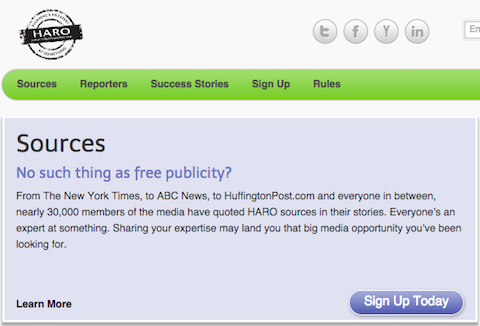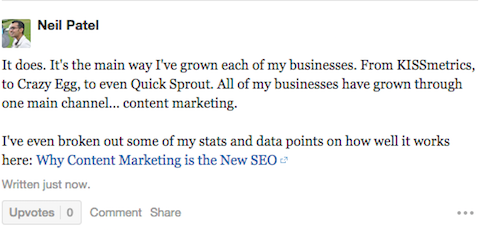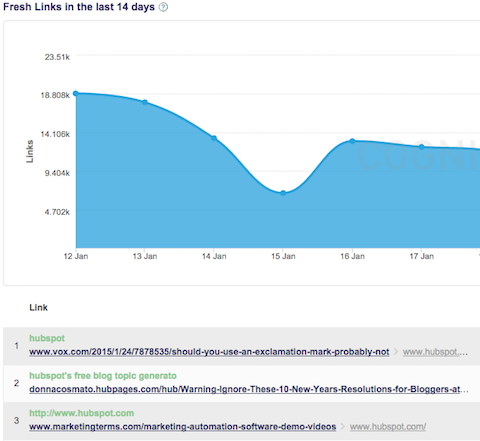Want to know how to get high-quality backlinks in 2025? You’re in the right place. Below, we’ll walk through 21 proven strategies to help you build real, sustainable links that actually move the needle. It takes persistence and effort—but if you’re willing to put in the work, the results are worth it.
High-quality backlinks remain one of the strongest signals in Google’s ranking systems. The most reliable way to earn them is by publishing content that deserves to be cited—original insights, useful tools, and data people trust. Layer in smart outreach and digital PR and you’ll acquire links faster without risking your site.
Skip gimmicks and gray-hat schemes. They’re increasingly easy to detect and rarely pay off long term. Instead, build links by helping people, contributing expertise, and creating resources others want to reference.
While the foundations of link building haven’t changed, some tactics work far better in 2025 than they did a few years ago. Below you’ll find what’s working now—and how to execute each play the right way.
21 Backlink Strategies That Work in 2025
Here’s a proven formula to start building more backlinks today. These aren’t theoretical—they’re battle-tested strategies we’ve used ourselves and seen work for others:
- Help a reporter out (HARO)
- Answer questions on Quora
- Fix broken links on resource pages
- Contribute to industry forums
- Link to relevant sites and notify them
- Create expert round-up posts
- Track and replicate competitors’ backlinks
- Offer something valuable to your community
- Guest post strategically
- Interview experts in your field
- Design and distribute infographics
- Build shareable quizzes
- Create personalized videos
- Sponsor relevant events
- Support nonprofits with time or services
- Offer royalty-free images in your niche
- Publish detailed case studies
- Feature influencers in your content
- Submit to curated link roundups
- Use the Skyscraper Technique
- Write detailed reviews and testimonials
1. Help a Reporter Out (HARO)
Help a Reporter Out (HARO) connects journalists with expert sources and remains a reliable path to earn high-authority links from media outlets and niche publications. (Tip: many journalists also post requests on alternatives like Qwoted and Featured.)

Reporters submit questions or source requests on topics ranging from business to tech to health. Scan the daily emails and reply quickly with concise, quotable insights. Include a one-line bio with your credentials and a link to a relevant resource on your site.
If a journalist uses your quote, they’ll typically cite you—and often link to your homepage or an author bio. Even if links are nofollow, the authority and referral traffic are worth it.
Set a recurring 30–60 minute weekly block to draft responses, keep a short “expert bio” ready to paste, and track wins so you can build a media page that attracts more press—and more links.
2. Answer Questions on Quora
Quora still produces meaningful visibility and steady referral traffic. Search your topics (e.g., “email marketing” or “WordPress hosting”) and filter for questions with recent activity and many followers.
Write thorough, skimmable answers—use short paragraphs, bold for emphasis, and bullets where it helps. Link naturally to a deeper guide on your site only when it’s the best way to expand the answer.
Focus on reputation first. Helpful answers can rank in Google for years, sending qualified readers and secondary links as others discover and cite your content.


In the example above, the answer provides real value before linking to a deeper resource. That’s the right approach on Quora in 2025—earn trust first, then reference your content when it truly adds value.
Pro tip: Join relevant Quora Spaces, repurpose strong answers into short LinkedIn posts, and track questions that consistently drive traffic so you can update your answers over time.
3. Fix Broken Links on Resource Pages
Broken link building still works—especially on resource pages and university or association lists that aim to stay up-to-date.
Use a tool like Ahrefs’ Broken Link Checker (or a browser extension) to find dead links on relevant resource pages. Create a replacement that’s equal or better than the original, then reach out with a short, helpful note.
Keep outreach personal: mention the specific broken URL, your suggested replacement, and why it improves the page for their readers. Resource curators appreciate fixes and are far more likely to update their page.
Bonus: Check the Wayback Machine to understand what the original page covered so your replacement matches the search intent one-to-one.
4. Contribute to Industry Forums
Niche forums, communities, and subreddits still matter—not just for links but for exposure to the exact audience you want. Avoid spammy behavior at all costs.
Join communities where your users actually spend time (e.g., Indie Hackers, specialized Slack groups, or relevant subreddits). Answer questions thoughtfully and link only when your resource is clearly the best next step.
Many community links are nofollow/ugc, but they can spark organic citations later from bloggers and journalists who discover your content there.
Think long term: a consistent presence builds authority, relationships, and invitations to collaborate—all catalysts for natural links.
5. Link to Relevant Sites and Let Them Know
When you cite a helpful resource, let the creator know. Don’t ask for anything—just share the mention. This simple courtesy often leads to social shares, newsletter inclusions, and future links.
Here’s a quick email you can send:
Hey [Name],
We mentioned your article on [Topic] in our latest post: [Your Link Here]. Thought you’d like to see it—thanks for the great resource!
– [Your Name]
If your post is especially strong, you can add a light ask—“If you keep a resources page, feel free to include it”—but keep it casual and respectful.
6. Create Expert Round-up Posts
Round-ups still work when they’re genuinely insightful, tightly edited, and focused on a single question your audience cares about. Keep the prompt specific and ask for one tactical tip.
Aim for 30–50 contributors and expect about half to respond when your outreach is personal and on-topic. Provide a deadline, suggested word count, and an example of the kind of response you want.
After publishing, send a thank-you note with the link and a prewritten social blurb. Most contributors will share it; many will link from press or “featured in” pages.
7. Track and Replicate Competitors’ Backlinks
Use Ahrefs, Semrush, or Moz to analyze competitors’ recent backlinks. Sort by “new” to spot current opportunities—contributors, resource pages, podcasts, and newsletters that are actively linking out.
Study the content that earned the link and build something stronger: fresher data, clearer explanations, better design, or a complementary tool. Then reach out with a quick, personalized note explaining why your resource improves the reader experience.

Track your hit rate and iterate—small percentages compound quickly when you maintain momentum and keep quality high.
8. Offer a Gift to Your Community
Give away something people need and you’ll earn links naturally. Make it so useful that bloggers and communities want to point others to it.
Option 1: Create a royalty-free image gallery. Produce niche-specific photos or illustrations and offer them free with attribution. Provide simple credit text users can copy-paste to link back.
Option 2: Build a free tool. Calculators, checkers, and mini-APIs are link magnets. Even simple utilities (e.g., headline analyzers, ROI calculators) attract steady citations when useful and reliable.
Option 3: Publish original data or research. Run a survey or compile public datasets into a clear report. Add charts, downloadable CSVs, and a methodology section so journalists can trust and cite it.
Each of these delivers real value, which is why they keep earning backlinks over time.
9. Guest Post Strategically
Guest posting works when you bring fresh expertise to an audience that cares. Start with mid-tier publications in your niche, then leverage those wins to pitch bigger outlets.
Pitch tailor-made topics aligned to their editorial style. Offer outlines with key takeaways and unique data where possible. After publishing, promote the post aggressively—editors notice and often invite repeat contributions.
Pro tip: Don’t start with the biggest brand in your industry. Build a portfolio first, then work your way up to marquee sites.
10. Interview Experts
Expert interviews create authority, relationships, and links. Target subject-matter experts who maintain “as seen in” pages or media sections—they’re likelier to link back.
Keep outreach short and respectful, ask 5–7 tight questions, and make it easy to respond asynchronously. Include headshots, pull quotes, and clear subheadings so your interview is easy to skim and share.
Once live, send a thank-you note and social assets (images, quote cards). Many experts will share or link from bios, talks, or newsletters.
11. Design and Distribute Infographics
Infographics still earn links when they clarify complex ideas or present credible data. Pair concise copy with clean design and clearly cite sources.

Create an embed code beneath the infographic so publishers can add it to their site with a credit link back to you. Promote it on Reddit, Pinterest, LinkedIn, and in niche communities and newsletters.
Consider a supporting blog post with the full data and methodology. Editors love linking to a canonical “source of truth.”
12. Build Shareable Quizzes
Quizzes are inherently shareable. Make them useful (diagnostics, readiness checks) or entertaining (personality-style) and tightly aligned to your brand.

Build with tools like Typeform, Interact, or Outgrow and include embeddable result badges that link back to the quiz page. This is what turns shares into links.
To keep it clean, follow these rules:
- Keep it relevant to your niche—no off-brand viral bait.
- Use natural anchors (brand or page title), not keyword-stuffed links.
- Link badges back to the quiz page so the context is clear.
Great quizzes can keep earning mentions for months as people compare results and share with peers.
13. Create Personalized Videos
Personalized, interactive videos spark shares and links. Think templates where users add their name, photo, or inputs and then share the finished piece with a link back.

Tie your concept to a seasonal moment, product launch, or cultural trend. Provide copy-and-paste share text and an embed option so publishers can feature it easily.
Done well, these campaigns generate a wave of natural mentions from blogs and local media.
14. Sponsor Relevant Events
Event sponsorships often include dofollow sponsor listings on the event site. Local meetups, associations, and niche conferences are ideal—many have affordable options.

Prioritize events your audience actually attends. Ask organizers to include your link on sponsor, agenda, and recap pages for maximum visibility.
Beyond the link, the networking can lead to podcast invites, partner posts, and additional backlinks down the line.
15. Support Nonprofits with Time or Services

Nonprofits frequently acknowledge supporters with backlinks. Donations work, but so do in-kind contributions—offer your product, pro-bono services, or a grant of your software.
Choose causes adjacent to your niche to keep topical relevance. Provide a short blurb and logo to make adding your listing easy, and politely request inclusion on their partners or sponsors page.
You’ll earn trust signals, potential press mentions, and long-lasting links from reputable domains.
16. Offer Royalty-Free Images in Your Niche

Original photography and illustrations are always in demand. Publish a gallery of niche-relevant, royalty-free images and invite bloggers to use them with attribution.
Host everything on a single, well-structured page with clear download buttons and attribution instructions. Many publishers will link back automatically when they source an image.
Pro tip: Use descriptive file names and alt text to earn image search traffic alongside links.
17. Publish Detailed Case Studies
Transformation stories with transparent numbers attract links. Share your goal, baseline metrics, exact steps taken, and results—good or bad. Credibility beats hype.
Base the case study on a recognizable tactic or tool, document the process with screenshots and charts, and include a methodology section so others can replicate your outcome.
When you publish, notify any brands or experts mentioned. Many will amplify or link from their resource pages.
18. Feature Influencers in Your Content
Featuring people drives sharing. Quote their best insights (with credit), invite one-line contributions, or showcase standout examples from their work with a link back.
Send a short notification after publishing and include a ready-to-share snippet. Strong pieces often get linked from press or “featured in” pages and personal blogs.
Over time, these mentions build real relationships that lead to co-created content and additional links.
19. Submit to Curated Link Roundups
Roundups highlight the best new content in a niche. The editors are actively looking for high-quality pieces to feature—make their job easy.
Use search operators like:
intitle:roundup + [your keyword]
Compile 20–30 targets, engage with a few issues first (comment, share), then submit your single best post with a one-sentence summary of why it’s useful. When you’re included, thank the editor and promote their roundup to your audience.
Delivering traffic back to curators makes future inclusions far more likely.
20. Use the Skyscraper Technique
Find content in your niche with lots of backlinks, then build the definitive version—updated data, clearer structure, richer visuals, and unique insights the original missed.
Execute in three steps:
- Identify proven topics. Use Ahrefs or Semrush to find pages with strong backlink profiles.
- Create something unmistakably better. Add proprietary data, expert quotes, and interactive elements or tools.
- Outreach to linkers. Share your upgraded resource and explain the specific improvements for their readers.
This approach takes work, but it’s ideal for pillar pages that can earn 20–100+ links over time.
21. Write Detailed Reviews and Testimonials
Companies constantly seek credible social proof. That’s your cue to provide concise, results-focused testimonials for products you truly use—many brands will feature your quote with a link.
List the tools you rely on, then draft outcomes-focused lines like:
“[Product] helped us reduce [metric] by [percentage] in [timeframe].”
Include your name, title, headshot, and company URL. Send it to the company’s marketing team or via their “customers” page, and politely request attribution with your site link if they publish it.
Here’s a real-world example from AWeber’s success stories page:

Not every testimonial will earn a backlink, but a compelling story with specific results has a strong chance of being featured—and linked.
